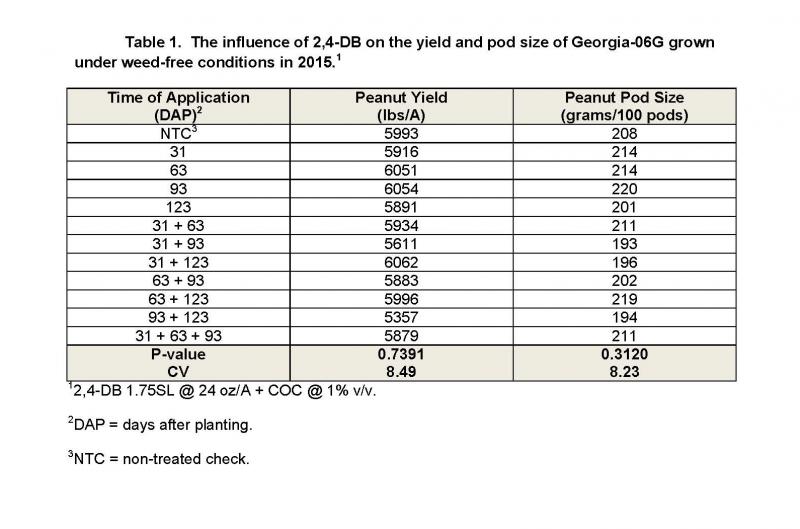Herbicide injury? Taking a new look at 2,4-DB and peanuts
Dr. Eric P. Prostko, UGA Extension Weed Scientist
Growers are always expressing concern about the potential negative effects of herbicides on crops. “Is that going to burn my crop?” or “Will that injury reduce yields?” are frequent questions I’m asked. One of the main focuses of my research is on how crops respond to herbicides when grown under weed-free conditions.
All herbicides have the potential to cause crop injury especially when applied at high rates or at the wrong time. You can rest assured though, that any recommendation by me or other university weed scientists will have been thoroughly tested and scrutinized to assure optimum activity and crop safety. If you read and follow the herbicide label, you should have no worries!
2,4-DB, sold under various trade names including Butyrac or Butoxone, is one of the most commonly used herbicides in peanut production systems. Results from a recent USDA/NASS chemical use survey indicated that 50 percent of the peanuts grown in the U.S. are treated with 2,4-DB.
Having just wrapped up my eighteenth peanut season, I often chuckle when I think about the many things that 2,4-DB has been reported to do when applied to peanuts. These would include potential yield reductions, increased pegging and increased pod size.
Earlier research on the effects of 2,4-DB on peanut would suggest that none of the above is true! Peanut plants are extremely tolerant of 2,4-DB. However, all of that research is now greater than 10 years old and was conducted on obsolete cultivars. With that in mind, I conducted some research this summer to evaluate the potential effects on 2,4-DB on the yield of Georgia-06G. It is well known that Georgia-06G is the most popular runner peanut variety grown in the southeast.
In a nutshell (no pun intended), I applied a high rate of 2,4-DB + crop oil to peanuts throughout the entire growing season. Click on the table to the right to view the results from the test.
I am happy (and not surprised) to report that 2,4-DB did not significantly influence peanut yield or peanut pod size. I want to remind growers that the rates and application timings used in this study were somewhat exaggerated with the intent of causing injury.
According to the labels, only two applications of 2,4-DB can be applied per season and these applications should occur no later than 45-60 before peanut harvest. Use rates (13 to 28 oz/A) also vary by label.
Although closely related, it is very important to remember that 2,4-DB and 2,4-D are not exactly the same thing. So when it comes time to spray 2,4-DB in 2016, make sure you get the right stuff. 2,4-D is not labeled for use in peanut and will cause yield losses depending upon the rate and stage of growth at application.
Herbicides should never be taken for granted. They can and do cause unacceptable crop injury when misapplied. Fortunately, research has proven once again that that 2,4-DB is a very safe and economical herbicide for use in peanut production systems. I look forward to visiting with you this winter at a local county production meeting. As always, good weed hunting!
Source: Southeast Farm Press

